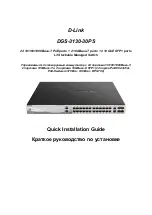
Dual-Speed Stackable Hubs User’s Guide
Unpacking and Setup
7
Hub Types
Unlike 10BASE-T hubs, which are all functionally identical, Fast Ethernet
hubs are divided into two distinct types: Class I and Class II. A Class I hub
repeats all incoming signals on one port to the other ports by first translat-
ing them to digital signals and then retranslating them back to line signals.
These translations are necessary when connecting various network media to
the same collision domain, such as when combining two wire-pair
100BASE-TX media with four wire-pair 100BASE-T4 media. Only one
Class I hub can exist within the same collision domain; thus, this type of
hub cannot be directly interlinked. A Class II repeater, on the other hand,
immediately repeats all incoming line signals on one port to the other ports;
no translations are performed. This type of hub connects identical media
within the same collision domain; for example, TX to TX. At most, two
Class II hubs can exist within the same collision domain.
As mentioned earlier, stackable Class II hubs can be used to increase the
number of available nodes in a collision domain. An entire hub stack
counts as a single repeater. DFE-908 series hubs are Class II devices.
2
2
U
NPACKING AND
S
ETUP
This chapter provides information on the unpacking and initial installation
of your hub stack.
Summary of Contents for DFE-908x
Page 7: ...vii ...
Page 8: ......
Page 27: ...Dual Speed Stackable Hubs User s Guide Understanding Indicators 15 ...
Page 28: ......
Page 37: ...Dual Speed Stackable Hubs User s Guide Cables and Connectors 25 ...
Page 40: ......
Page 42: ......
Page 44: ......
















































